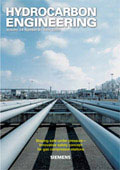Editorial comment
Bolstered by the first signs that the global economic outlook may be improving, combined with a weaker US dollar, oil prices recently eased through the US$ 60 a barrel marker for the first time in six months. Whilst this represents an 85% increase since the US$ 32 a barrel low in February it should not be viewed over enthusiastically.
Register for free »
Get started now for absolutely FREE, no credit card required.
Bolstered by the first signs that the global economic outlook may be improving, combined with a weaker US dollar, oil prices recently eased through the US$ 60 a barrel marker for the first time in six months. Whilst this represents an 85% increase since the US$ 32 a barrel low in February it should not be viewed over enthusiastically. As The Economist articulated recently with its usual sang-froid, ‘it would be a mistake to confuse the twitches of an economy on life-support with a lasting recovery’. This metaphor may be a little strong but it is nonetheless valid. China has indeed substantially increased imports of raw materials. Whilst this could perhaps be taken as an indication of economic recovery, it is actually more probable that China is merely taking advantage of current low commodity prices to stockpile supplies for the future. Similarly, OPEC has raised its output by 270 000 bpd following many months of production cuts. Apparently a positive gesture, but with the IEA simultaneously revising down predictions for world oil consumption in 2009 to 83 million bpd, OPEC’s optimism appears unfounded. It is very likely that having successfully pushed oil prices up to US$ 60 a barrel, the cartel is struggling to keep its members compliant. As always, Saudi Arabia has made the biggest cuts with others such as Iran and Angola continuing to pump well in excess of their agreed production quotas. The danger for the oil and gas sector, is that any small increase in production could quickly and indeed negatively impact on the already fragile rally in crude oil prices.
For the refining industry worldwide, the ongoing demand outlook is bleak. The sector is characterised by a growing refining capacity and a weakening product demand. A recent report by Wood Mackenzie, which focuses on European and US refining in particular, identifies extreme pressure on margins and a subsequent reduction in refinery utilisation. Oil demand is being severely impacted by the global recession, made worse for refiners by the increased use of non-refinery supply such as biofuels and the ongoing introduction of new refining capacity around the world such as in China and Reliance’s giant Jamnagar refinery in India. The report anticipates demand to decline by 1.1 million bpd in the US and Europe between 2008 and 2010 leading to an average reduction in utilisation of approximately 5%. This will be felt hardest on the US east coast where FCC refineries have long concentrated on maximising gasoline production. However, with a glut of gasoline both in the US and globally, this region looks set for substantial utilisation cuts. European refiners, for their part, hold a key advantage over their US counterparts as the diesel deficit across Europe, which leads to stronger middle distillate prices, provides a level of protection, though it too will be far from immune to utilisation cuts.
In light of these grave concerns and the general gloom surrounding global oil demand and refinery utilisation, Contributing Editor, Nancy Yamaguchi’s article on Middle Eastern oil refining, commencing on page 12, is particularly timely. As ever, this region continues to be an oil and gas powerhouse and despite current market volatility, its continued drive to develop all aspects of its hydrocarbon infrastructure is a welcome cause for optimism.


